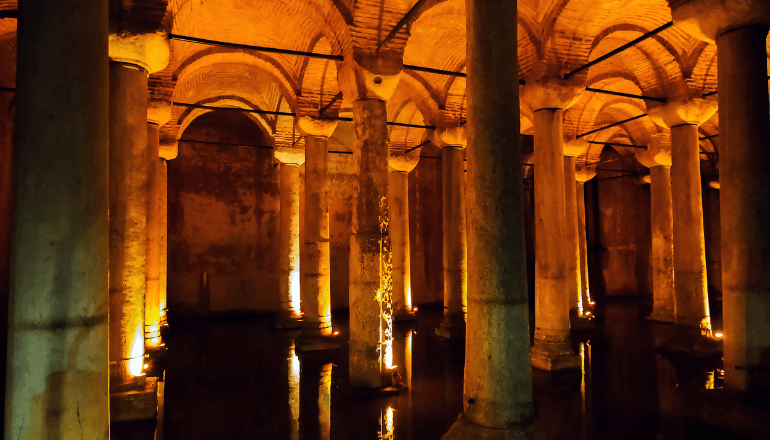The Basilica Cistern is a famous underground cistern located in the historical centre of Istanbul. It was built in the 6th century during the reign of the Byzantine Emperor Justinian I and was used to store water for the city. The cistern is an impressive feat of engineering and is an important example of Byzantine architecture and water management.
The Basilica Cistern is located in the Sultanahmet neighbourhood of Istanbul, near the Hagia Sophia and the Blue Mosque. It's open to the public and can be visited as a guided tour.
The cistern is a vast underground chamber with a surface area of around 9,800 square meters and a height of up to 14 meters. It's supported by 336 columns arranged in a grid pattern and is decorated with intricate carvings and marble cladding. The cistern is also home to two famous statues, known as the Medusa Heads, which are believed to have been recycled from an earlier monument.
Visitors to the Basilica Cistern can walk through the underground chamber and admire the architecture and decorations. The cistern is dimly lit and has a calm and peaceful atmosphere, making it a unique and enjoyable place to visit in Istanbul.
To visit the Basilica Cistern, you'll need to purchase a ticket at the entrance. The cistern is open daily from 9:00am to 6:00pm, with the last admission at 5:00pm. It's a popular tourist attraction, so it's a good idea to visit early in the day or during off-peak seasons to avoid crowds.


.jpg)


0 Comments